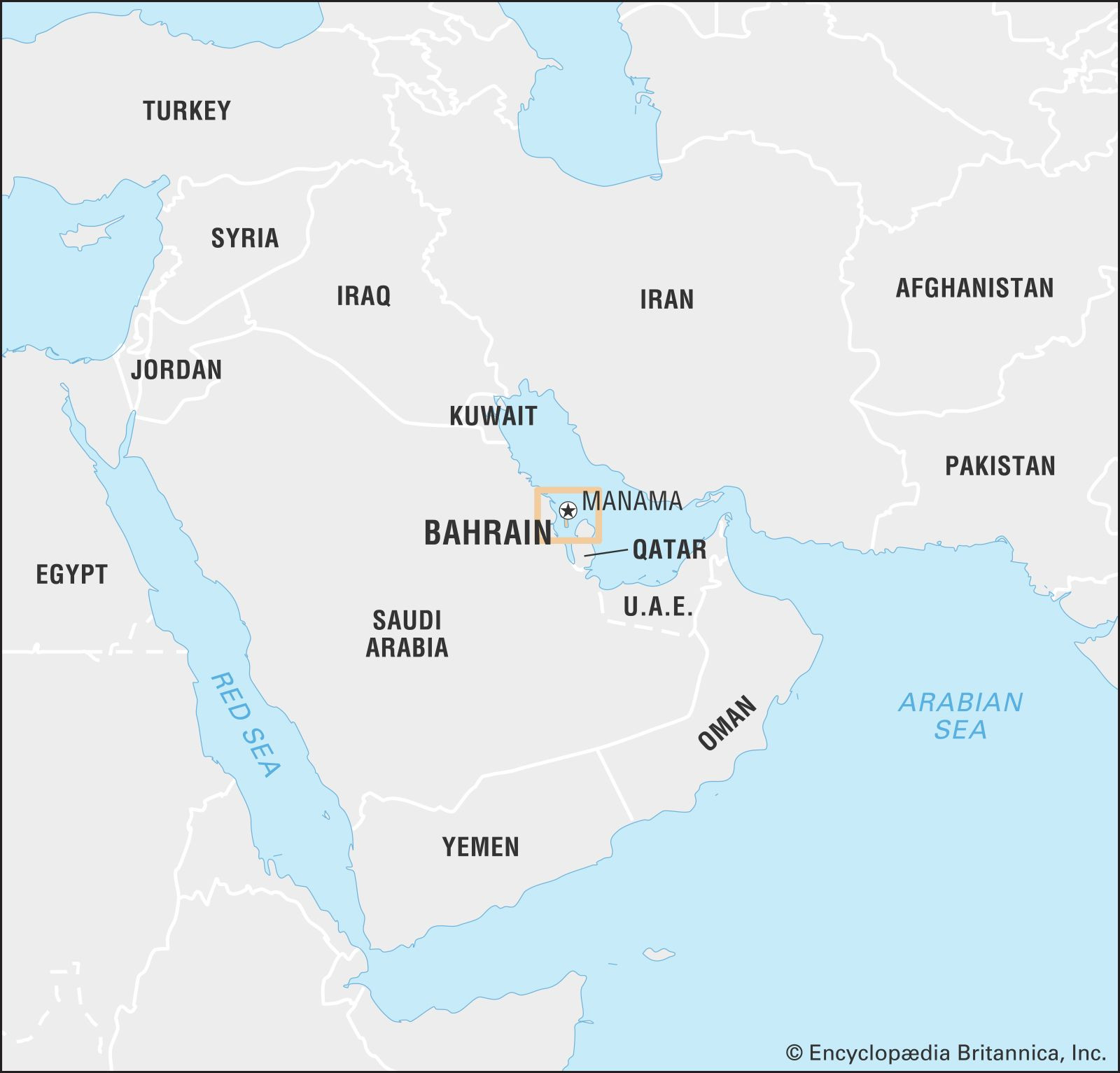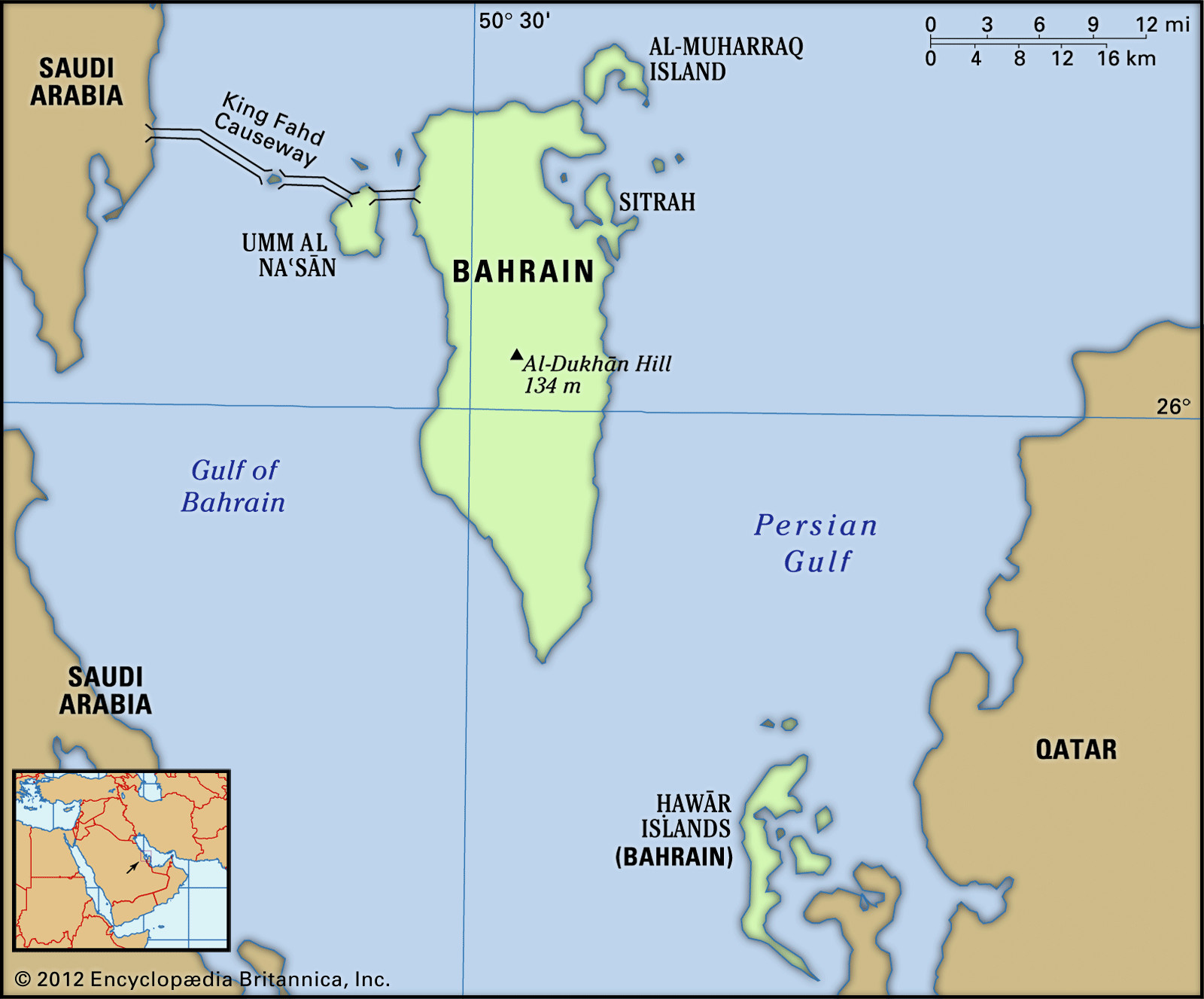Bahrain, officially known as the Kingdom of Bahrain, is a captivating island nation that often sparks curiosity: Where Is Bahrain Located? This small Arab state, rich in history and culture, is nestled in a strategic location in the Persian Gulf, making it a significant player in the Middle East. Let’s delve into the geographical details to pinpoint Bahrain’s location and understand its regional context.
Bahrain is situated in a bay on the southwestern coast of the Persian Gulf. To provide a clearer picture, it lies to the east of Saudi Arabia and west of the Qatar Peninsula. More precisely, Bahrain is an archipelago, comprising Bahrain Island and approximately 30 smaller islands. This island cluster is positioned off the eastern coast of Saudi Arabia and to the northwest of Qatar.
Geographically, Bahrain is located in Western Asia, specifically within the Middle East. It sits at approximately 26°00′ North latitude and 50°35′ East longitude. Its position in the Persian Gulf places it in a region renowned for its oil reserves and historical trade routes. The strategic importance of its location has shaped Bahrain’s history and continues to influence its role in regional and international affairs.
Bahrain’s closest neighbor is Saudi Arabia, located to the west across the Gulf of Bahrain. The King Fahd Causeway, an impressive feat of engineering spanning 15 miles (24 km), directly connects Bahrain to Saudi Arabia, fostering close economic and social ties between the two nations. This causeway is a vital link, facilitating trade and travel and underscoring Bahrain’s geographical proximity to Saudi Arabia.
 World map showing the location of Bahrain in relation to surrounding countries
World map showing the location of Bahrain in relation to surrounding countries
Further to the east, across the Persian Gulf, lies the Qatar Peninsula. While not directly connected by a causeway, Qatar is another significant neighbor, sharing maritime borders and regional interests with Bahrain. Historically, there have been territorial disputes, particularly concerning the Hawar Islands, which were eventually resolved in 2001 by the International Court of Justice, awarding them to Bahrain.
The name “Bahrain” itself gives a clue to its watery location. Derived from the Arabic term al-baḥrayn, meaning “two seas,” this name likely refers to the freshwater springs that historically existed alongside the surrounding saltwater seas, or potentially to the two bodies of water bordering the islands – the bay west of the main island and the wider expanse of the Persian Gulf to the east.
Bahrain’s capital city, Manama (Al-Manāmah), is strategically situated on the northeastern tip of Bahrain Island. As the country’s chief city, port, and capital, Manama benefits significantly from Bahrain’s overall location. Its coastal position has made it a historical hub for trade and maritime activities, evolving into a modern, cosmopolitan city that attracts visitors and businesses alike.
 Physical map of Bahrain showcasing its islands and surrounding waters
Physical map of Bahrain showcasing its islands and surrounding waters
The archipelago nature of Bahrain also plays a crucial role in its geography. Bahrain Island, the largest, constitutes the majority of the country’s landmass. Surrounding it are smaller but significant islands like Al-Muḥarraq and Sitrah, connected by causeways to facilitate residential and industrial expansion. The Ḥawār Islands, located further southeast near Qatar, add to Bahrain’s island territory, despite their smaller size and sparser population.
In conclusion, Bahrain is located in the southwestern Persian Gulf, east of Saudi Arabia and northwest of Qatar. Its strategic position in this oil-rich region has been pivotal throughout history, shaping its economy, culture, and international relations. As a fascinating archipelago nation, Bahrain stands as a unique blend of tradition and modernity, firmly rooted in its geographically significant location in the heart of the Middle East.
